1920s
An Artificial Sun
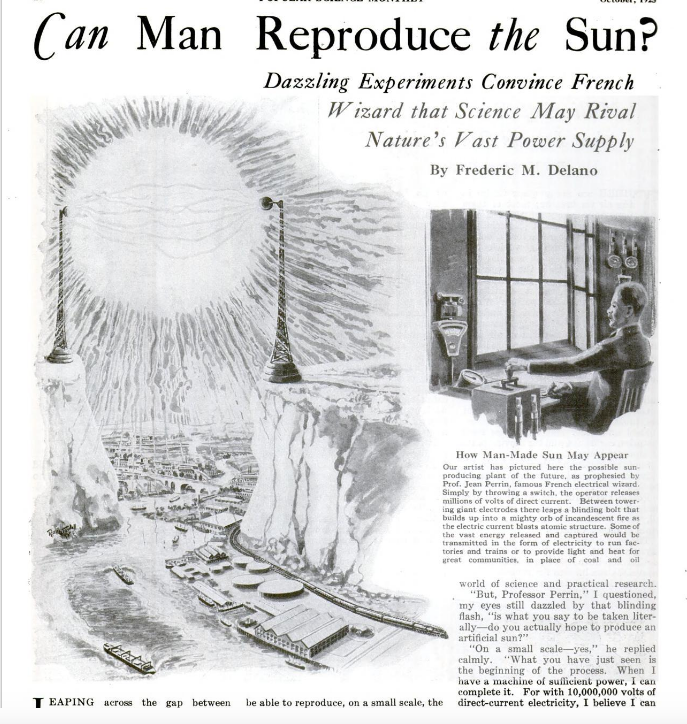
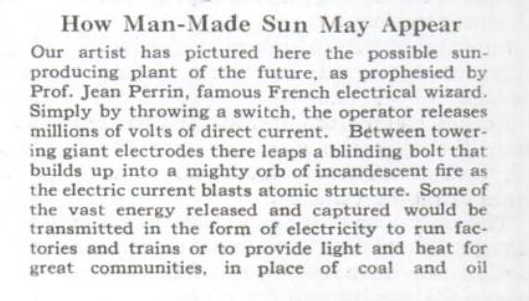
Read the whole piece here.
Posted By: Paul - Thu Apr 30, 2020 -
Comments (2)
Category: Armageddon and Apocalypses, Death, Destruction, Disasters, Technology, Crackpots, 1920s
Canned Sunshine
The idea of using sunlight to kill viruses inside the body has recently been in the news. That made this old invention I posted about last month seem topical.Edward W. Boersteler, of Watertown, MA, was the inventor of the ‘Curay Light Applicator,’ aka ‘Canned Sunshine.’ Back in the 1920s and 30s, he marketed it as a cure for the common cold. It emitted ultraviolet light, which people were supposed to shine down their throats, killing the germs.
In the selection of text below (taken from an article in the Chilicothe Constitution Tribune - Oct 16, 1925), I didn't correct any of the misspellings. In particular, I wasn't sure whether the phrase "ultra violent light" was a mistake, or intentional.
“Fused quartz transmits ultra violent or invisible light without loss, whereas ordinary window glass shuts out ultra violent light which is the curative agent in sunshine.
“In the Curay Light aplicator,” Boerrsteler continued, “we have produced a source of radient energy closely approximating concentrated sunlight in the upper altitude, with an equivalent ultra violent content. Though it is a potent germ killer, it is harmless to the cels of the body.

image source: Harvard University Collection of Historical Scientific Instruments

Chilicothe Constitution Tribune - Oct 16, 1925
Posted By: Alex - Fri Apr 24, 2020 -
Comments (4)
Category: Health, Inventions, Cures for the common cold, 1920s
Pigeon-Killing Death Ray
Dr. Antonio Longoria claimed that he had invented a death-ray. In tests it demonstrated the ability to kill pigeons at a distance of four miles. However, he destroyed his machine and vowed never to build another, insisting that he was “interested now only in doing something to help civilization.”
Spokane Chronicle - Oct 11, 1939

Tampa Tribune - Oct 13, 1939

Posted By: Alex - Fri Mar 06, 2020 -
Comments (0)
Category: 1920s, 1930s, Weapons
The Most Useful Mayonnaise
How useful is your mayonnaise? Not as useful as Durkee's!
San Francisco Examiner - Aug 21, 1927

San Francisco Examiner - July 3, 1927
Posted By: Alex - Thu Mar 05, 2020 -
Comments (5)
Category: Food, Mayonnaise, Advertising, 1920s
Whose fault is it when your husband is cross at breakfast?
Answer (according to 1920's ad men): It's the wife's fault for serving him coffee or tea.Strange, because I'm pretty crabby in the morning if I don't have coffee.

The Helena Star - Oct 6, 1921
Posted By: Alex - Fri Feb 28, 2020 -
Comments (4)
Category: Advertising, Husbands, Wives, 1920s
Airplane Hat
Created by Gilbert Myers of Boise, Idaho. He was evidently worried that someone might steal his idea because, in 1929, he patented it. From the patent:Use of a number of novelty hats constructed as herein disclosed has demonstrated that the hat enjoys the favor of adults as well as children and may be applied to heads of various sizes in a highly convenient and expeditious manner and will remain firmly in place, all without exerting an objectionable pressure on the head.
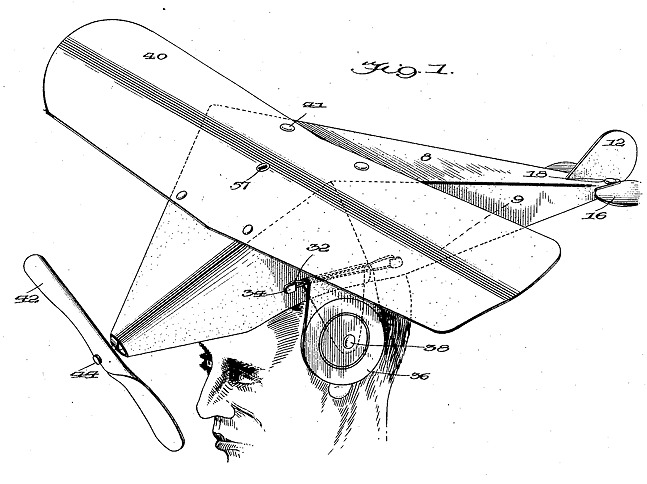
The picture below shows the airplane hat being worn. (The accompanying article identified it as Myers's hat).
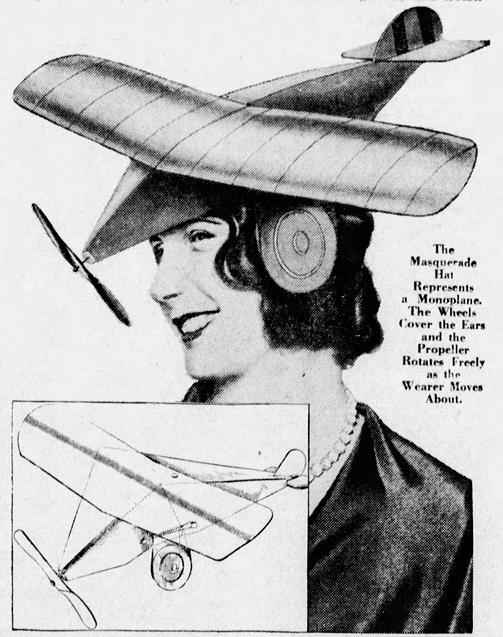
Minneapolis Star Tribune - Feb 2, 1930
These other photos, of actress Alice White, I'm not so sure about. It looks a lot like his hat. If it isn't, someone ignored his patent.
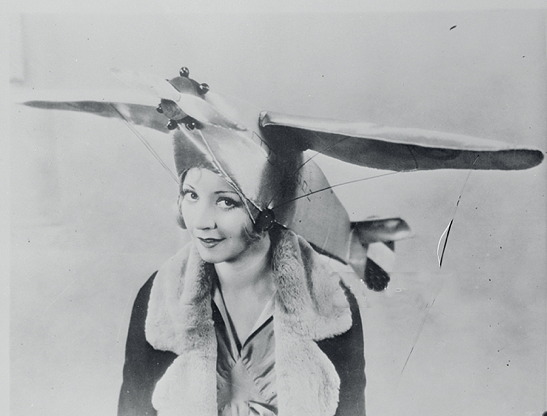
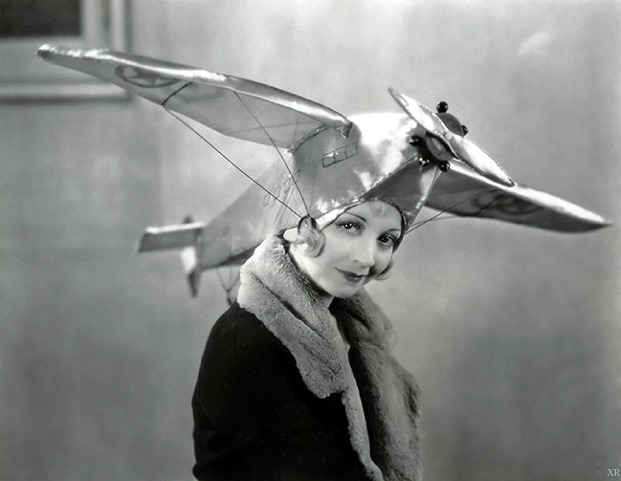
source: Flickr
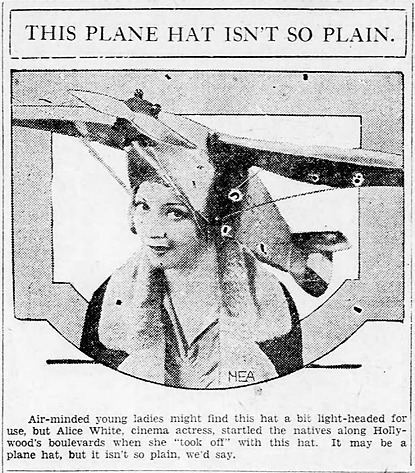
Battle Creek Enquirer - Jan 14, 1930
Posted By: Alex - Sun Feb 23, 2020 -
Comments (2)
Category: Patents, Air Travel and Airlines, Headgear, 1920s
Unauthorized Dwellings 12
Once Manhattan was home to squatters. Go to article link for readable text.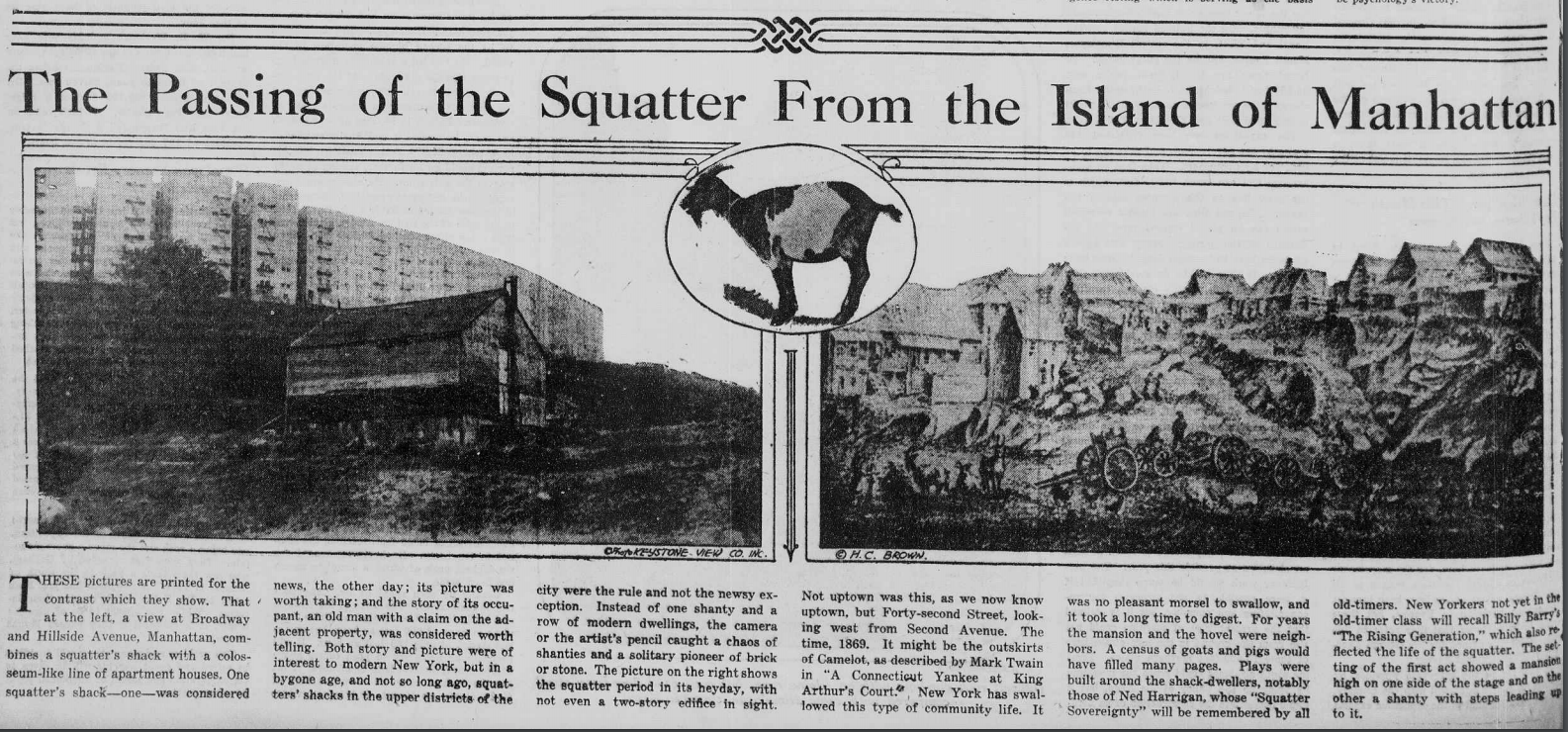
Article source.
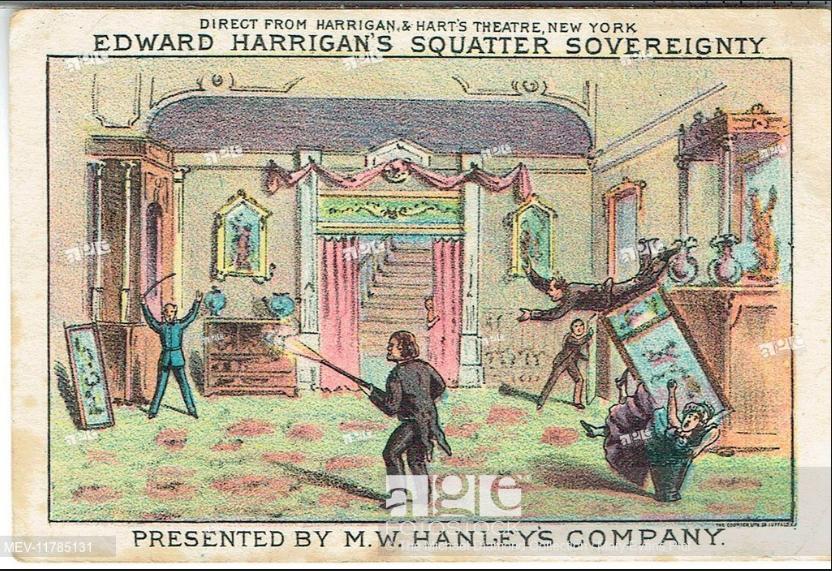
Posted By: Paul - Thu Feb 20, 2020 -
Comments (2)
Category: Eccentrics, Urban Life, Unauthorized Dwellings, 1920s, Nostalgia
Mystery Illustration 92
What horrible tragedy is causing this houseguest to run away in so perilous and dramatic a manner?The answer is here.
Or after the jump.
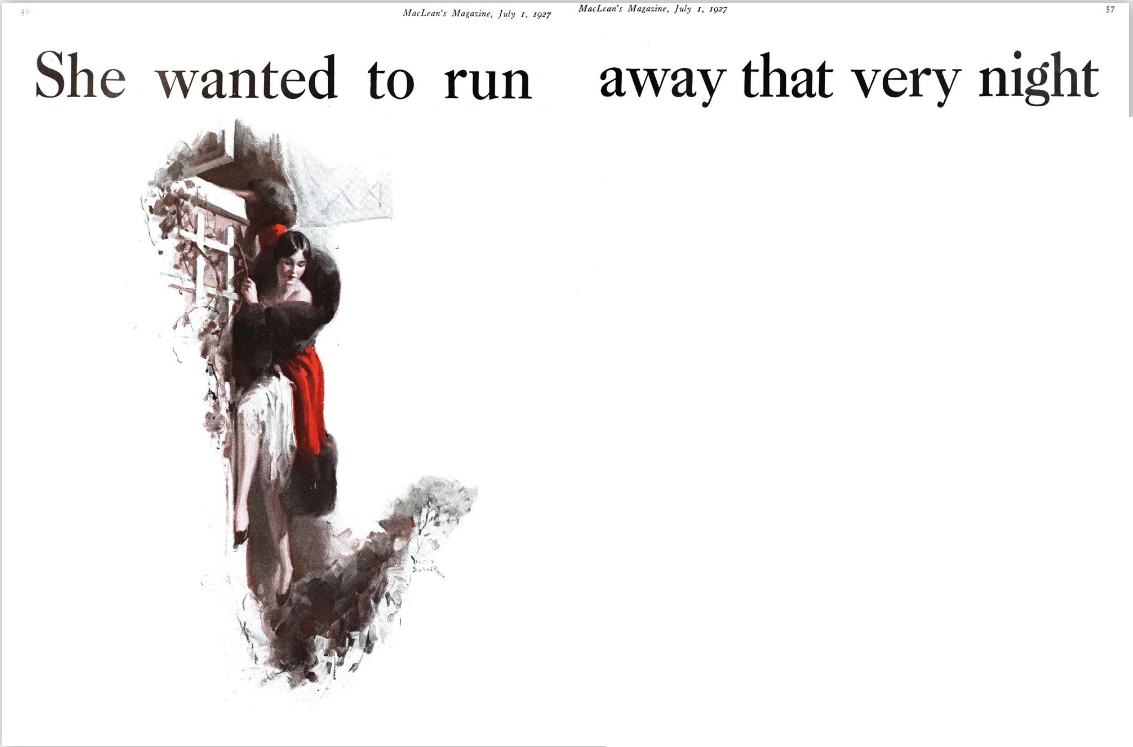
More in extended >>
Posted By: Paul - Mon Feb 03, 2020 -
Comments (2)
Category: Domestic, 1920s
Follies of the Madmen #463
The most potent cosmic force in the multiverse approves of this floor polish.Source.
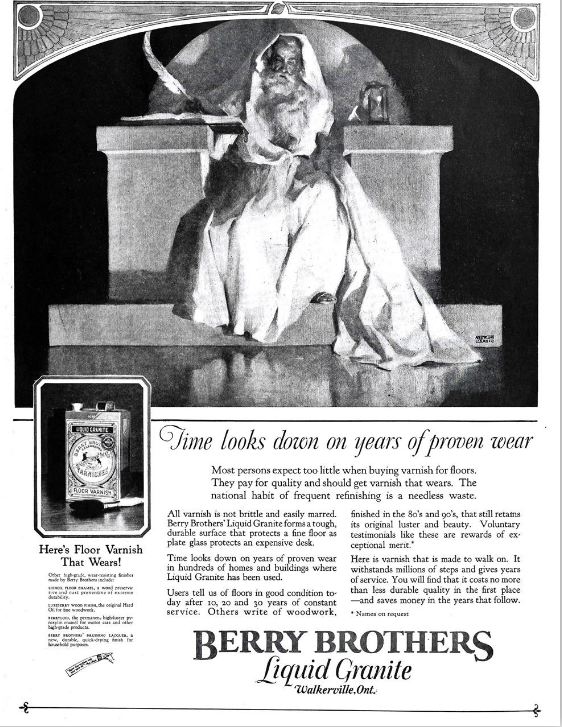
Posted By: Paul - Tue Jan 28, 2020 -
Comments (0)
Category: Anthropomorphism, Business, Advertising, Domestic, 1920s
Artwork Khrushchev Probably Would Not Have Liked 26
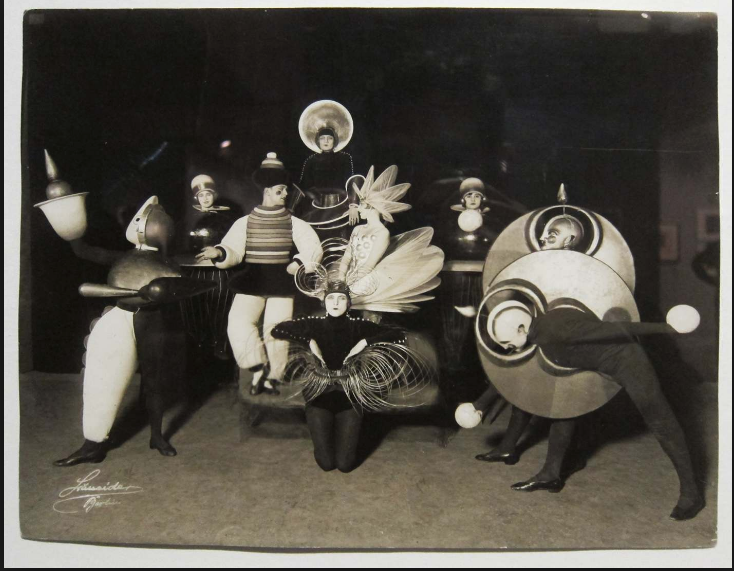
The Wikipedia page.
Posted By: Paul - Wed Jan 22, 2020 -
Comments (1)
Category: Avant Garde, 1920s, Dance

| Who We Are |
|---|
| Alex Boese Alex is the creator and curator of the Museum of Hoaxes. He's also the author of various weird, non-fiction, science-themed books such as Elephants on Acid and Psychedelic Apes. Paul Di Filippo Paul has been paid to put weird ideas into fictional form for over thirty years, in his career as a noted science fiction writer. He has recently begun blogging on many curious topics with three fellow writers at The Inferior 4+1. Contact Us |




